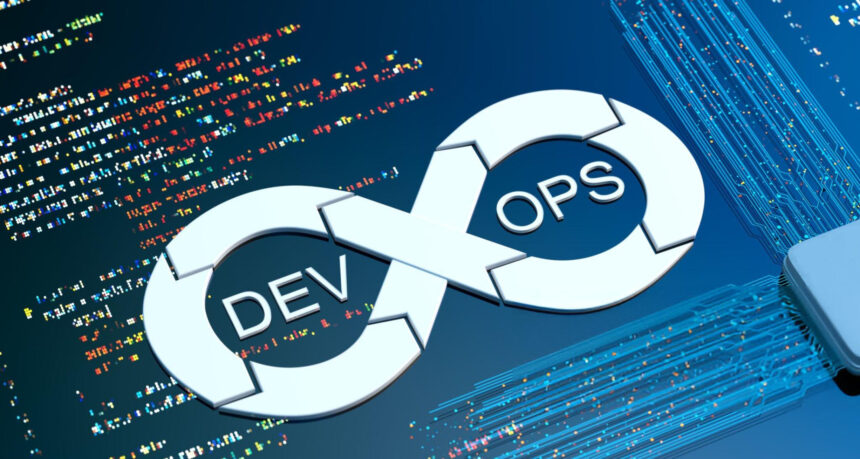In the digital age, speed is a business imperative. As users demand faster updates, seamless performance, and zero downtime, traditional software development and deployment models are no longer sufficient. Enter DevOps, CI/CD, and the powerful wave of automation—a transformation reshaping how software is built, tested, and delivered.
This automation shift isn’t just technical—it’s deeply cultural. It changes how teams collaborate, make decisions, and view responsibility. In this article, we explore the core principles of DevOps, the mechanics of CI/CD, and how automation is enabling a culture of continuous delivery across modern tech teams.
The DevOps Mindset: Breaking the Wall
DevOps—short for Development and Operations—is not a toolset. It’s a philosophy that emphasizes collaboration between previously siloed teams: developers who write the code and operations teams who manage infrastructure and deployment.
Traditionally, developers would hand off code to operations with little context, resulting in production issues, delays, and a culture of blame. DevOps breaks that wall down. In a DevOps model:
- Development and ops teams work collaboratively from the beginning.
- Everyone shares responsibility for stability, security, and performance.
- Teams prioritize automation, monitoring, and rapid iteration.
This mindset aligns engineering efforts with business goals, enabling organizations to respond quickly to market demands.
Continuous Integration (CI): The First Building Block
Continuous Integration is a practice where developers frequently merge their code changes into a central repository—often several times a day. Each integration triggers an automated build and a suite of tests.
The key benefits of CI include:
- Early detection of bugs and integration issues.
- Immediate feedback for developers.
- A constantly updated codebase that’s always in a deployable state.
CI reduces the risks of “integration hell,” where combining large chunks of code from different contributors results in chaos. It ensures that small, incremental changes are validated continuously.
Continuous Delivery and Deployment (CD): The Real-Time Advantage
Once CI is in place, the next step is Continuous Delivery—the practice of automatically preparing code for release to production at any time.
In true Continuous Deployment, every change that passes automated testing is released to users automatically, without manual intervention.
This creates a paradigm shift:
- Speed to market increases dramatically.
- Rollback mechanisms become essential for managing risk.
- Confidence in testing and monitoring becomes non-negotiable.
By reducing the time between coding and delivery, CD helps businesses innovate faster and more reliably.
Automation as the Backbone
None of this is possible without robust automation. From code integration to testing, staging, and release, automation ensures consistency, repeatability, and scalability.
Some of the key automation pillars include:
- Infrastructure as Code (IaC): Tools like Terraform and AWS CloudFormation enable teams to define and provision infrastructure programmatically.
- Automated Testing: Unit tests, integration tests, and performance tests ensure code quality at every step.
- Monitoring and Alerting: Platforms like Prometheus, Datadog, and Grafana keep teams informed in real-time about system health and anomalies.
- Pipeline Orchestration: Tools like Jenkins, GitHub Actions, GitLab CI/CD, and CircleCI manage workflows end-to-end.
Automation not only reduces manual effort but enforces discipline—testing, documentation, and compliance become part of the development DNA.
Culture of Continuous Delivery: A Human Revolution
While CI/CD and DevOps are often seen as technical advancements, their real power lies in changing team culture.
- Collaboration over Control
In a DevOps-driven environment, developers, testers, and operations personnel work in sync, breaking down silos and promoting shared accountability. - Blameless Postmortems
Failures are inevitable. DevOps culture emphasizes learning over punishment, using incidents as opportunities to improve systems and processes. - Decentralized Decision-Making
Automation enables smaller, autonomous teams to make deployment decisions confidently, reducing bottlenecks and fostering innovation. - Customer-Centric Feedback Loops
Frequent releases and continuous monitoring bring teams closer to users, allowing them to adapt quickly based on real-world feedback.
This human-centric transformation is often the hardest—and most crucial—part of the automation shift.

Challenges on the Road to Continuous Delivery
Despite the clear benefits, adopting DevOps and CI/CD is not without challenges:
- Legacy systems may not integrate well with modern automation pipelines.
- Security and compliance require careful integration into the delivery process.
- Cultural resistance can stall adoption if leadership and teams are not aligned.
Successful transformation requires executive support, change management, and investment in training and tools.
The Payoff: Faster, Safer, Smarter
Organizations that embrace the automation shift report measurable improvements:
- Faster release cycles—going from quarterly or monthly updates to daily or even hourly.
- Improved software quality—thanks to automated tests and early bug detection.
- Better user experience—with quicker iterations and reduced downtime.
- Higher team morale—as manual, repetitive tasks are automated, freeing engineers for creative problem-solving.
In a competitive landscape where software is at the heart of nearly every business, these advantages are no longer optional—they’re essential.
Final Thoughts: The Future Is Always Shipping
The automation shift, powered by DevOps and CI/CD, is more than a trend—it’s the new normal. It’s transforming how organizations deliver value, how teams collaborate, and how innovation scales.
To thrive in this environment, businesses must invest in more than tools. They must embrace a culture of trust, experimentation, and continuous learning.
Because in the age of continuous delivery, the future isn’t something you prepare for—it’s something you ship, again and again.









